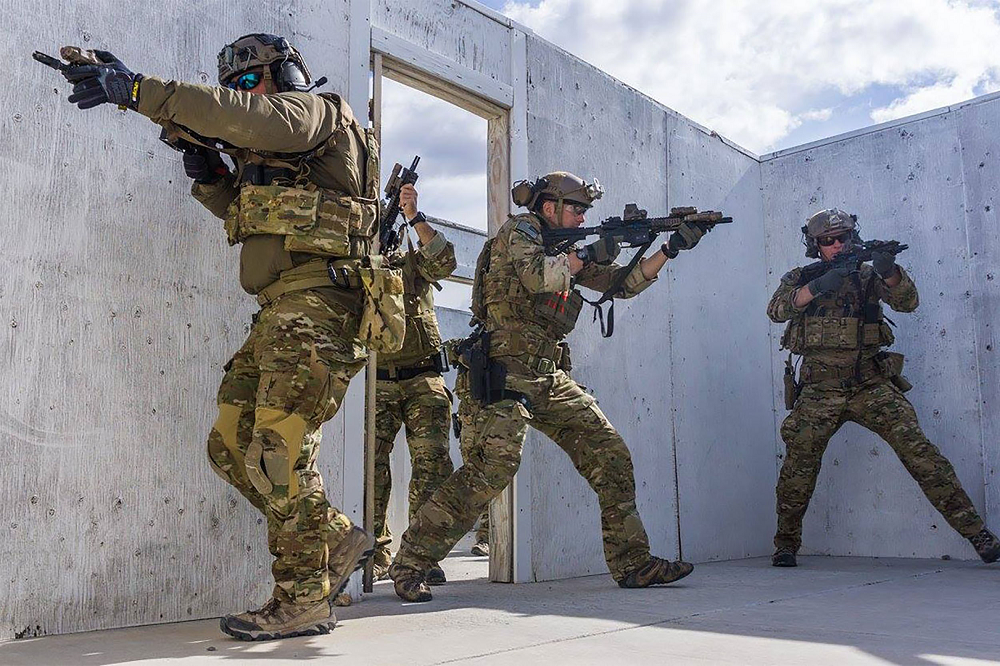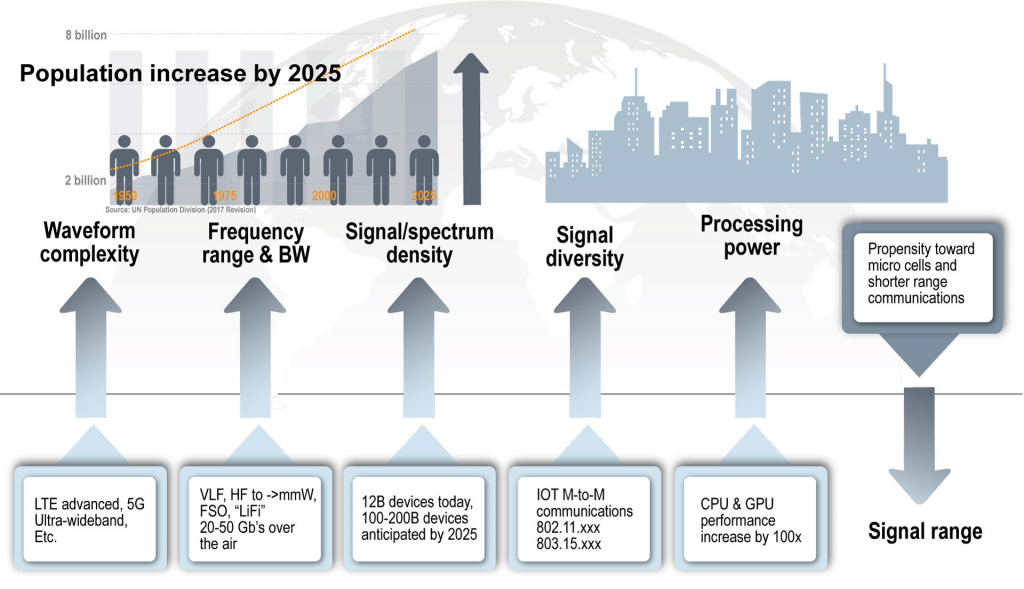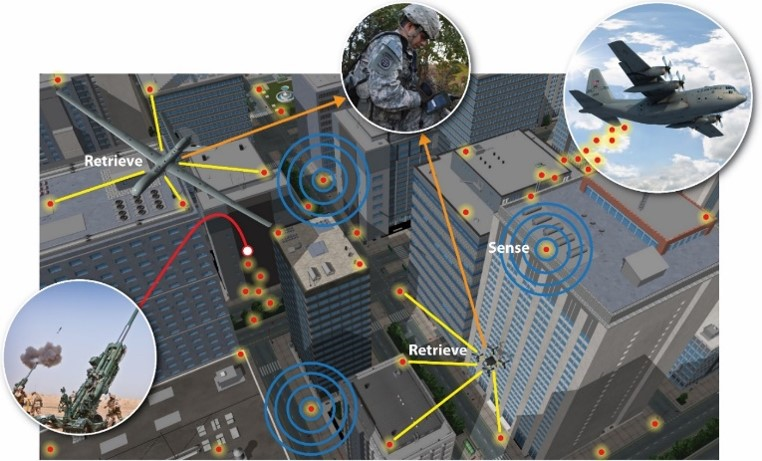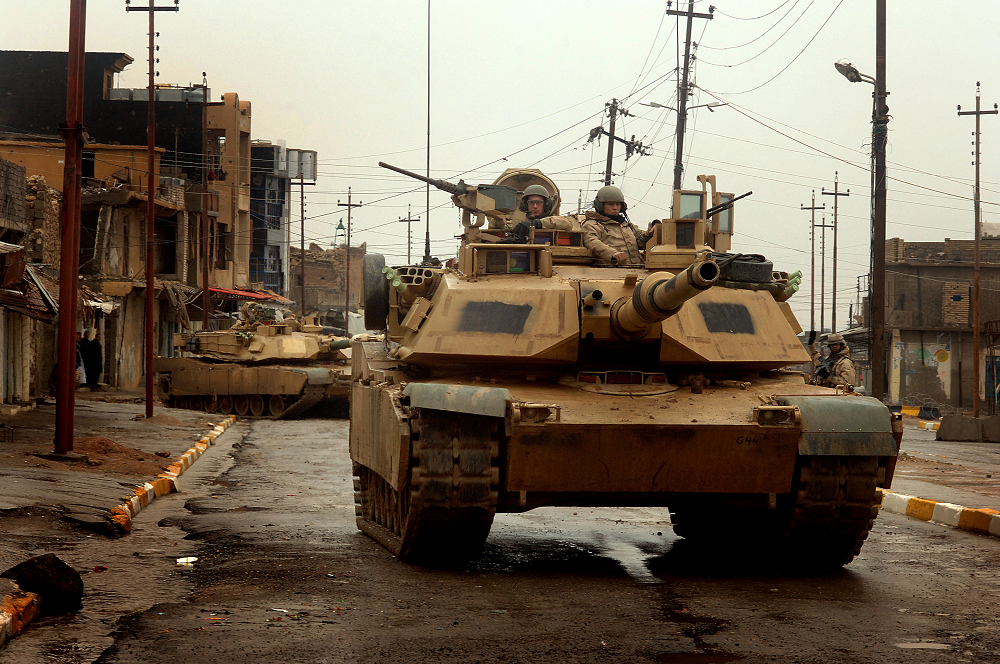
In the complex, digitally connected battlespace of the future, situational awareness will be the difference between victory and defeat. By optimizing current capabilities, developing new sensors and harnessing the power of data analytics, engineers and scientists will help commanders gain a better understanding of cyberspace and the electromagnetic spectrum.
by Mr. Giorgio Bertoli, Ms. Danielle Duff, Ms. Courtney Coulter and Mr. Keith Riser
At the 2017 Association of the U.S. Army (AUSA) annual conference, Chief of Staff of the Army Gen. Mark A Milley said that “the conflict of the future will almost certainly be in dense urban terrain.” The United Nations projects that nearly 70 percent of the world’s population in 2050 will live in cities. During the same period, the number of internet-connected devices (including computers, smartphones, home electronics, personal gadgets and even people) is expected to increase dramatically to more than 600 billion, based on current rates of growth in ownership. Current military capabilities will not be able to deal with the complexities and sheer density of signals in such an environment, while robust communications links and extensive infrastructure will provide many advantages to an entrenched adversary.
To understand what a future conflict, even one just a decade or so into the future, might look like in an urban environment, imagine it’s 2030. U.S. armed forces have a mission to liberate and then provide security for a city occupied by a hostile force. The enemy is dispersed throughout the city in small operational groups, using an extensive digital mission-command infrastructure to coordinate its activities. To avoid detection, adversary troops are augmenting their military command-and-control equipment by using the communication infrastructure available within this urban environment. The commercial communication standard is now 6G. (Back in 2018, most smartphones ran on a 3G network.) Along with providing extremely robust communications and internet access to the local population, this cutting-edge digital infrastructure also supports the machine-to-machine communications necessary for the internet of things and automation capabilities that are now omnipresent in a typical smart city.
Within this operational environment, friendly forces must be able to identify adversary actions across both physical and virtual boundaries. They will need to rapidly understand the local cyber and electromagnetic environment and identify how an adversary may use cyberspace to cause disruptions that undermine U.S. activities (e.g., cut off power and services, impede traffic flow, conduct targeted propaganda campaigns).
Obtaining situational awareness in such a scenario will be extremely difficult. The nearly uncountable number of devices, the complexity of modern communication waveforms, and the ubiquity of available communication modes are but a few of the major technical barriers that will need to be overcome. To address this new challenge, the military must re-evaluate how its systems can be tasked to do more than just their intended function. It must develop new and novel sensors, and find new and novel ways of using existing sensors, that can acquire and discern signals of interest within such dense information environments. And, it must use innovative data-processing techniques, such as machine learning, to help make sense of all this information.

Figure 1: Commercial communications are growing in complexity with multiple improvements anticipated over the next decade. Coupled with congested and contested environments, this type of environment will challenge the Army’s ability to operate on the electromagnetic spectrum, and in real time. (Graphic by U.S. Army CERDEC)
A SPECTRUM OF CHALLENGES
To support mission planning and execution, commanders will need situational understanding of both the physical and cyberspace domains. For instance, what adversaries exist in the area and how are they communicating? Are they using the available local infrastructure? What applications are they using to communicate and share information—are they using Gmail; are they chatting on Telegram or Snapchat? What radio frequency spectrum do they use? Where are they? To help answer these and other questions, the U.S. Army’s research and development community is investigating innovative approaches to identifying signals of interest from such future multifaceted and signal-rich environments. (See Figure 1.)
To obtain situational awareness of the electromagnetic spectrum, the Army currently uses large, dedicated electronic support and intelligence collection systems, mostly mounted on aircraft. Such assets are relatively few in number, overtasked and, if air superiority is not assured, must be situated a considerable distance behind friendly lines to maintain freedom of maneuver. In the electronically dense battlefields of the future, this traditional approach of using a few large and expensive systems at a considerable standoff will not be sufficient to collect and sift through the vast assortment of signals in the environment.
To combat these technical challenges, the U.S. Army Communications-Electronics Research, Development and Engineering Center (CERDEC), a subordinate organization of the Research, Development and Engineering Command and soon to be part of the new Army Futures Command, has established the Every Receiver a Sensor (ERASE) program. This endeavor comprises at least six related science and technology research efforts managed under one umbrella. Each effort is a distinct building block that, when combined, will create a holistic approach to significantly broaden and expand the Army’s tactical sensing capabilities.
ERASE is founded on four core principles:
- Broaden the Army’s cyber and electromagnetic sensor aperture by leveraging all available tactical receivers, regardless of their primary design function, as potential sensors of opportunity.
- Extend sensor reach by developing novel sensor and system concepts.
- Leverage all available data by exposing, aggregating and correlating data that is currently hidden within system internals or ignored.
- Speed commanders’ decision-making by developing supporting data management, analytics, visualization and command-and-control tools.

Figure 2:
SCATTERING SENSORS
Under the Every Receiver a Sensor program, CERDEC plans to experiment with distributing a very large number of very small, inexpensive and disposable sensors throughout a contested or congested operational zone to acquire specific signals of interest—gathering, for instance, seismic data, or radio frequency information. (Graphic by U.S. Army CERDEC)
BROADENING THE SENSOR APERTURE
Each U.S. Army brigade combat team has thousands of tactical receivers on the battlefield. These resources (including radios, platform protection systems, radars) each have distinct and specific functions. When idle, or potentially in conjunction with their normal operation, these devices can also serve as sensors. Today, most communications equipment is based on standard, generic hardware, with software providing the specialized functionality. As a result, these systems have the technical flexibility to be used in multiple different ways.
The ERASE program will build on previous capabilities, such as the Defense Advanced Research Projects Agency’s RadioMap program, which demonstrated how tactical radios (e.g., the 117G) can be used as radio frequency sensors. While each of these systems will be limited in performance when compared to dedicated spectrum-sensing capabilities, their sheer quantity and proximity to potential signals of interest throughout the battlespace should allow for the acquisition of valuable new data. Furthermore, this approach to broadening the Army cyber and electromagnetic aperture provides new capabilities without adding additional maintenance and sustainment costs for new equipment.
EXTENDING SENSOR REACH
When operating in contested environments, within which vehicles, planes and helicopters will be restricted in their maneuver, the Army still must have the capability to acquire the information it requires to understand the battlespace. Extending sensor reach to such denied zones can be accomplished in part by leveraging emerging new platforms such as high-altitude balloons and small, unmanned aerial vehicles. These technologies have matured significantly over the past several years and have been demonstrated to be capable of providing data and voice service to hurricane-affected areas.
This technology is being used today to provide wireless services to Puerto Rico as it continues to recover from Hurricane Maria, the Category 4 storm that struck the U.S. territory in September 2017. Additionally, under the ERASE portfolio, CERDEC is investigating the efficacy of using a very large number of very small and inexpensive sensors—like radio frequency sensors, or seismic sensors, for example—that can be distributed in mass quantity over a region of interest to acquire specific insights into the local environment. (See Figure 2.)
LEVERAGE ALL AVAILABLE DATA
Our tactical systems already collect a large amount of information as part of their normal operation. However, this data is internally hidden within the device and is often not available to external systems for further processing. For example, practically all modern fielded communication systems monitor their own performance to help maintain quality of service. The system does this by measuring quantities such as received signal power levels and bit error rates. Most of this monitoring, and any remediating action taken by the device, are invisible to the operator.
For the user, such information will most often be superfluous. However, if this currently invisible data was made visible and then correlated across a large number of systems, it might provide near-real-time warnings of events within the electromagnetic environment. One radio experiencing a high error rate is, in itself, not very consequential. A couple dozen radios all reporting higher than normal error rates within close proximity of each other could, however, be an indication of adversary electronic attack activity.
SPEED COMMANDERS’ DECISIONS
Data acquisition is only the first step in situational understanding. Once obtained, data must be ingested, aggregated and analyzed in various ways to derive meaning. For instance, simply collecting the total number of automobile accidents that have occurred over a period of time is not by itself very useful. However, correlating this data with other factors such as location, weather conditions and time of day, could enable the identification of hazardous roadways and intersection that could then be remedied.
Future operational environments will necessitate the collection of extremely large and diverse data sets that humans will not be able to process using traditional software approaches. To overcome this, CERDEC will employ novel big-data processing and machine-learning techniques to reduce the time it takes to process such vast amounts of information.
Furthermore, such data sets will need to be stored as part of a distributed data-management system that will allow processing to occur at points close to the tactical edge; the ideal scenario is for data to be processed at the lowest level possible, as close to where it was collected as possible, so that resources aren’t wasted sending large amounts of data back to higher headquarters. This will ensure that we do not overburden our tactical networks by attempting to move data across tactical communication links, and that relevant insights are made more expediently at the levels where they are most beneficial. In such an architecture, insights derived from data held at lower levels can be condensed and reported up the chain, where it can be further aggregated and analyzed to derive broader insights.

An adversary dug in to a dense urban environment, using robust communications links and taking advantage of extensive local infrastructure, would have an advantage over U.S. troops trying to decipher the sheer complexity of digital signals—unless military procedures change and allow units to exploit all possible sources of data, including sensors primarily designed for something else. (U.S. Army photo)
CONCLUSION
It’s the year 2030. U.S. armed forces have been ordered to liberate and provide security for a city that is occupied by a hostile force. Upon initial entry, they use all available dedicated and opportunistic sensors at their disposal to validate and enrich previously known intelligence. Based on this new data, advanced analytics calculate that the adversary is operating within a small section of the city that is currently inaccessible to U.S. forces. New sensor platforms that can safely access these zones are tactically deployed for final confirmation. Machine learning and advanced analytics subsequently suggest various course of action for the commander, who then takes decisive action.
The Every Receiver as a Sensor program is but a first step to realizing this new capability. By leveraging and expanding upon commercial technological advancements to broaden and extend Army tactical sensing capabilities, the program is working to revolutionize how the Army uses all its available tactical resources to sense the cyber-electromagnetic environment and derive meaning from this information that the tactical commander can use.
For more information please contact Edric Thompson (edric.v.thompson.civ@mail.mil), Public Affairs Officer, CERDEC.
GIORGIO BERTOLI works for Intelligence and Information Warfare Directorate (I2WD), CERDEC, where he serves as senior scientific technology manager of offensive cyber technologies. He holds M.S. degrees in electrical engineering and computer science and has more than 25 years of experience in the areas of cyber, electronic warfare and military tactics, both as a civilian and as a former active-duty enlisted Soldier. He is Level III certified in engineering and is a member of the Army Acquisition Corps (AAC).
DANIELLE DUFF is a senior engineer who oversees the research portfolio for I2WD, CERDEC, Intelligence Systems and Processing Division. She holds a Master’s of Electrical Engineering from the University of Delaware and a B.S. in electrical engineering from Virginia Tech. She is Level III certified in engineering and test and evaluation and is a member of the AAC.
COURTNEY COULTER is team lead for site exploitation of the Identity Intelligence Branch and manages a portfolio aimed at providing backend systems and Soldier interfaces used to identify, collect, process and exploit information on the battlefield, quicker and more effectively using automated tools. A computer engineering graduate of Bethune-Cookman University, she attended Texas A&M – Texarkana to receive an M.S. in business administration and later Stevens Institute of Technology, receiving a Master of Engineering in system engineering. She is Level III certified in systems engineering, holds a Project Management Professional certification and is a member of the AAC.
KEITH RISER works for the U.S. Army Intelligence Systems and Processing Division, I2WD, CERDEC, as a team lead for identity intelligence. He holds an M.S. in software engineering from Monmouth University and a B.S. in computer science from Rutgers University. He is Level III certified in engineering.
RELATED LINK:
U.S. Army Communications-Electronics Research, Development and Engineering Center: https://www.cerdec.army.mil/
This article will be published in the October – December 2018 issue of Army AL&T magazine.
Subscribe to Army AL&T News, the premier online news source for the Acquisition, Logistics, and Technology (AL&T) Workforce.







